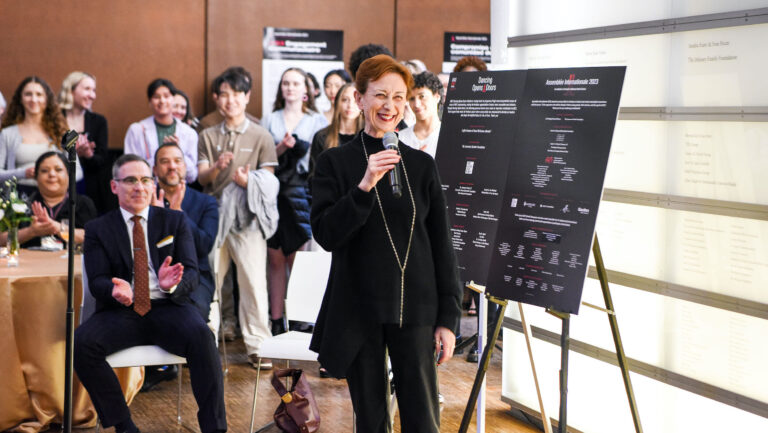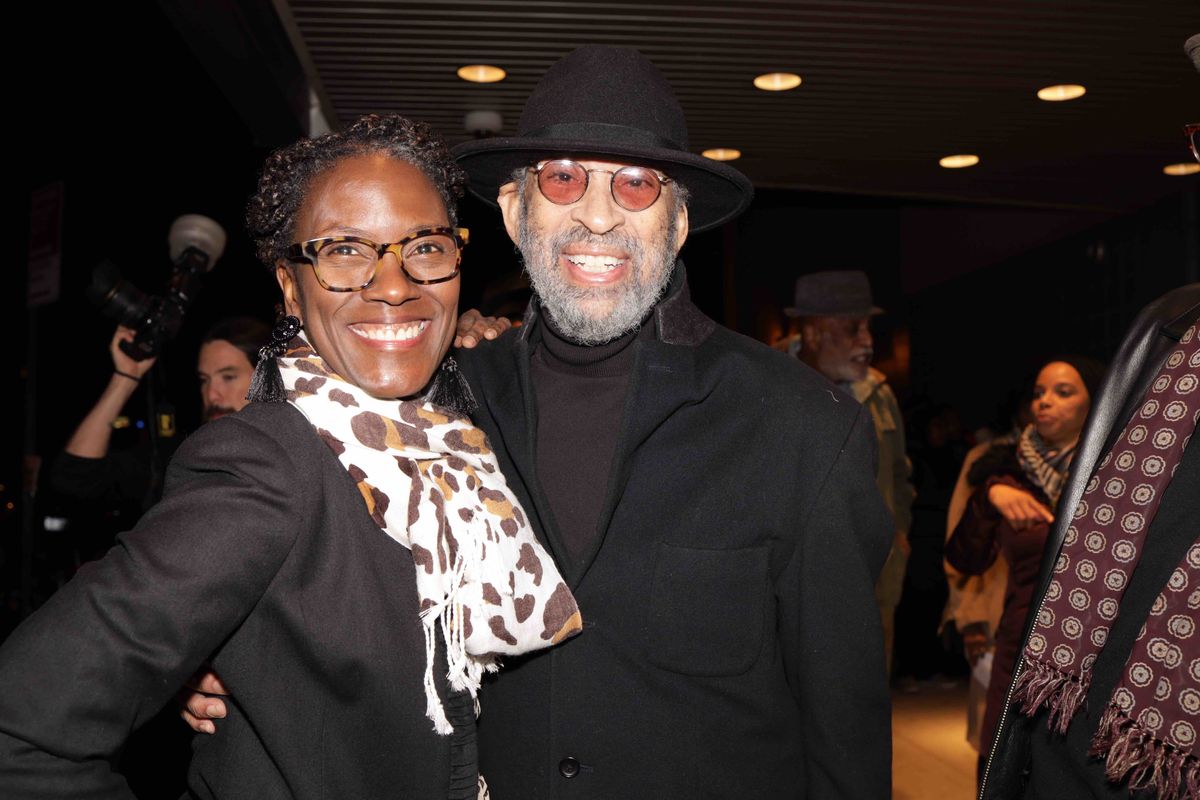
In March, prior to sheltering in place due to the coronavirus outbreak, my husband and I traveled from New York City to Miami to screen our award-winning documentary, Maurice Hines: Bring Them Back, at the Miami Film Festival.
Our star, Tony Award–nominated dancer and choreographer Maurice Hines joined us in Miami for the festival—stepping and repeating on the opening night red carpet, sharing anecdotes from his illustrious seven-decade career with local tap students, and holding court at a cocktail mixer with lively female fans.
My parting image of the marvelous Mr. Hines from that trip was of him peeking from behind his hotel room door wearing a plush white robe, delighted as we handed him a plate of cookies from the filmmakers lounge. “Bye, sweetheart,” he said warmly.
Maurice is the older brother of late, great tap dancer and actor Gregory Hines, who won a Tony Award for his role in Jelly’s Last Jam. He was also a bona fide film and TV star—in the 1980s he starred in Running Scared, with Billy Crystal, and in White Nights, with Mikhail Baryshnikov, and in the late ’90s he had a recurring role as Grace’s boyfriend on the hit NBC sitcom “Will & Grace.”
Although Maurice is also a triple threat—he co-starred with Gregory in Francis Ford Coppola’s The Cotton Club, and got a Tony nod for his musical revue, Uptown…It’s Hot!—his achievements have been largely eclipsed by Gregory’s.
That’s what attracted me to produce Maurice Hines: Bring Them Back, which will be screening as part of the virtual San Francisco Dance Film Festival beginning this Sunday, October 18. The documentary has already won two coveted film festival awards: DOC NYC’s 2019 Grand Jury Prize (Metropolis Competition) and the 2020 Jury Award for Best Documentary at the American Black Film Festival.
Here’s what it was like to make a film about this oft-overlooked star—and to get to know him in the process.
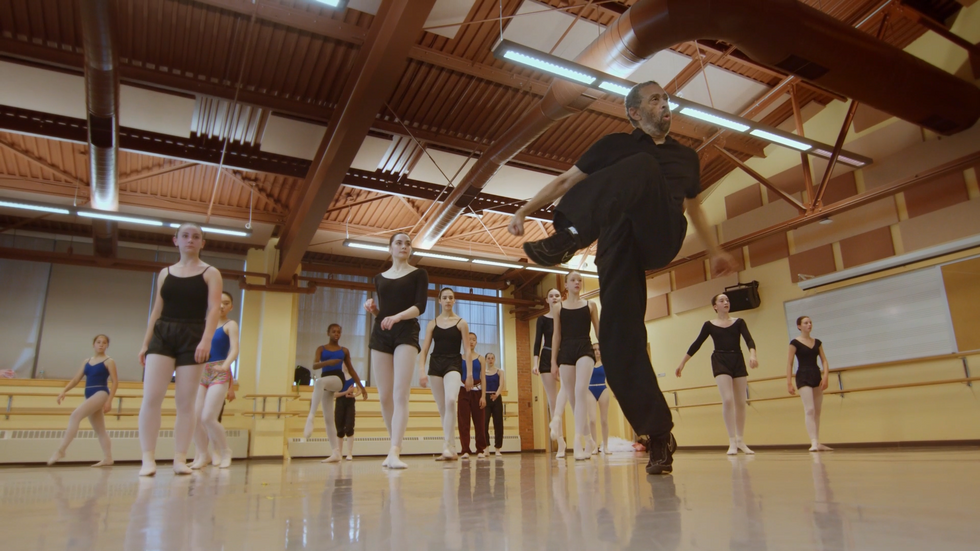
A still from “Bring Them Back”; Hines teaching at University of Hartford
Courtesy Hopkins
How I Became a Documentary Producer
I have fond memories of going on bus trips from Baltimore with my mom to catch Broadway shows. One unforgettable matinee was Sophisticated Ladies, starring Gregory Hines and Judith Jamison. My mom and I left the theater in awe of the dazzling dance numbers and humming tunes from the swinging Duke Ellington songbook, and we caught a glimpse of Gregory, a scarf coolly flung over his shoulder, exiting through the stage door. Eventually, Maurice would replace his brother in Sophisticated Ladies. It seems serendipitous that several decades after seeing this Broadway show, I would write and produce a documentary about Maurice and his family.
My husband, independent filmmaker John Carluccio, was introduced to the idea of documenting Maurice through a friend of a friend. Maurice was slow to offer full access, but over time, John gained his trust by being patient, persistent and consistent. After the original production team dismantled, John asked me to come on board. Previously, we had produced lifestyle segments together for Brooklyn Independent Television. Working with my spouse is sometimes challenging, but we make a good team.
Career-wise, I was at a crossroads. For over 25 years, I’d worked in publishing as a lifestyle and entertainment writer and editor for a variety of media companies, including Dance Media. I yearned to switch gears and move in a new direction, and John knew that my perspective as a Black woman knowledgeable about dance and Broadway would be an asset to the film.
As the film’s writer and producer, I keep the storytelling streamlined, objective and culturally rooted, and focused on the project’s financial goals. Shifting my perspective helped me to see that as a journalist—guiding a story from inception to completion—I was already a producer.
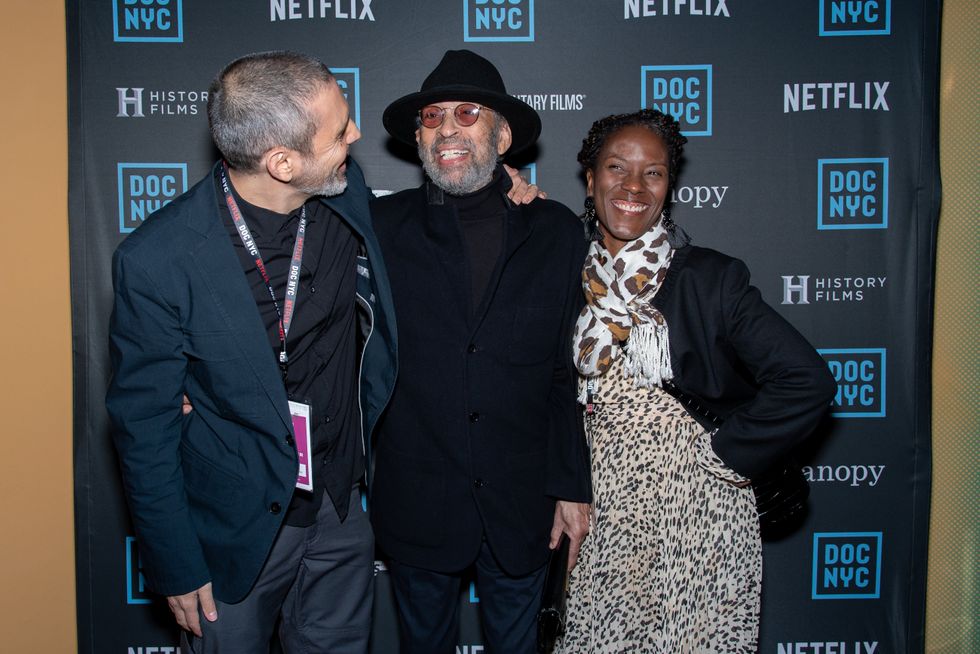
Hopkins (right) with Hines (center)
Carlos Sanfer, courtesy Hopkins
Telling Maurice’s Story
Maurice Hines: Bring Them Back is an intimate portrait full of song and dance, and heart and soul. The documentary intercuts rare archival footage of Maurice and Gregory—who began performing together at ages 7 and 5 as the Hines Kids and then cemented their stardom as Hines, Hines & Dad, with a Las Vegas residency and their father Maurice Hines Sr. on drums—with scenes of Maurice in the present day.
We watch the native New Yorker walk down memory lane at the famed Apollo Theater, where he and Gregory performed as kids, and reminisce about tap greats the Nicholas Brothers with modern day tap star Jason Samuels Smith. We also capture poignant moments, like the U.S. Postal Service launch event for the Gregory Hines Black Heritage stamp, where Maurice took the stage with his niece Daria and tearfully confessed how much he misses his brother.
Although I was familiar with Maurice’s work (in 2006 I saw his ambitious Broadway musical Hot Feet set to the music of Earth, Wind & Fire), putting the documentary together gave me greater insight into the life and times of this showbiz survivor. In the ’80s, he co-created the innovative dance company Ballet Tap USA, with Mercedes Ellington. And during filming, I watched the surprisingly spry senior hold his own onstage with far younger hoofers, dexterously teach tap students a Bill “Bojangles” Robinson step to the beat of Janet Jackson’s “Nasty,” and show burgeoning bunheads how to be fierce.
But beneath his supportive dance teacher demeanor and energetic stage persona, there’s a palpable loneliness as he grows older without his brother Gregory, who died of cancer in 2003. Maurice taught Gregory to tap, yet he would often underplay his own accomplishments and gush about how great Gregory was. He didn’t hesitate to yell “Cut!” to us if a conversation became too close for comfort. But over time, Maurice opened up and shared his truth—about how being outspoken and openly gay affected his career, and his complicated, often estranged relationship with his brother.
Shooting With the Stars
My first official shoot on the documentary was at the Debbie Allen Dance Academy (DADA) in Los Angeles. Admittedly, I was a little starstruck, perhaps because I grew up watching Allen in Fame. Ms. Allen graciously agreed to be an executive producer on our documentary, and it was touching to watch the fellow Howard University graduate affectionately introduce her students to her dear friend Maurice.
Other highlights of the nearly three-year production were a thrift store shoot—a shopping passion I share with Maurice, who has a flair for vintage coats—and coordinating the conversation between Maurice and Broadway legend Chita Rivera (they co-starred in Bring Back Birdie) at Dance Theatre of Harlem.
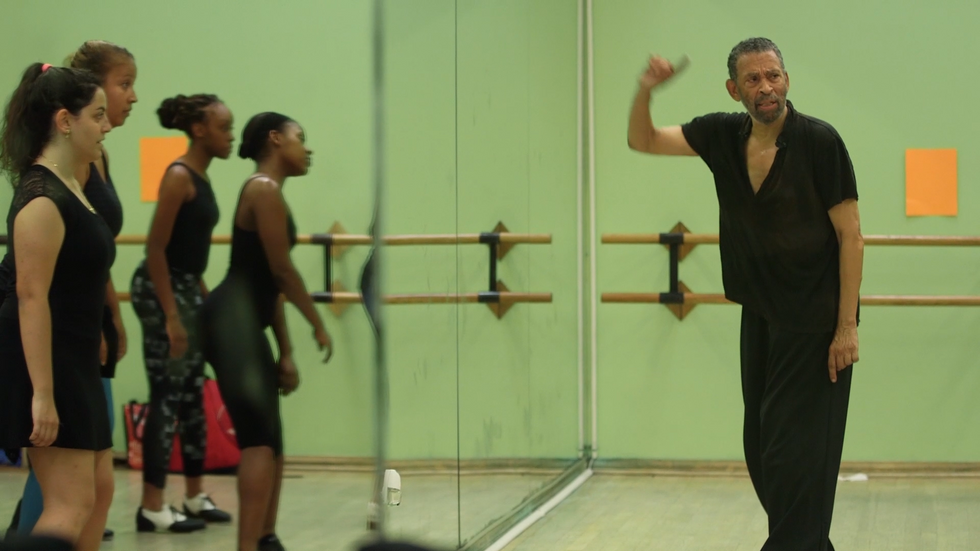
A still from “Bring Them Back”; Hines teaching at DADA
Courtesy Hopkins
What I’m Taking Away From the Experience
Since we wrapped filming, John and I stay in touch with Maurice, now 76. We’re proud to be part of his circle of friends and that our soulful story about this trailblazing elder showman has been well received by diverse audiences.
Writing and producing this documentary has shown me that I enjoy visual storytelling, and that I hope to continue to grow as a film writer and producer to champion underrepresented Black narratives. It has reaffirmed for me that as an African-American woman and storyteller, my voice matters.


